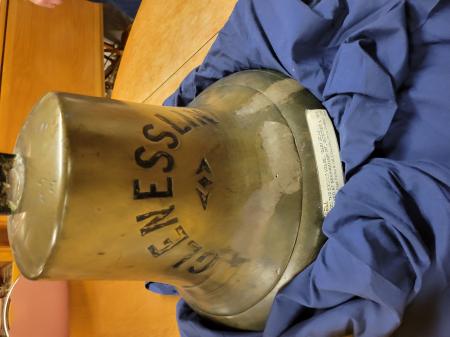The Tale of City Hallenstein
Once, in the tranquil town of Fiscalshire, the local city council harbored grand ambitions. They envisioned a new city hall, one that would tower over Fiscalshire like a beacon of progress, replacing an old but functional building they had been neglecting. Yet, their dreams were hampered by the mundane shackles of budgets and public opinion. What they spent on a new building would not be available to fund essential infrastructure and city enhancements which the voters preferred. That was until they appointed the new City Manager, Mr. Hallenstein, who was hailed as a visionary capable of turning even the dreariest ledger into a masterpiece of municipal finance.
Mr. Hallenstein, with sharkskin suits (Where does the shark end and the skin begin?, some asked.) and sharper wit, began his tenure with a zeal that bordered on fanaticism. His singular obsession: to erect the new city hall as a monument to his legacy and launchpad for his career. The council, blinded by promises of architectural grandeur and modern efficiency, gave him free rein, not knowing that they had unleashed a force that would run amok through the town’s finances.
With the stealth of a cat burglar, Mr. Hallenstein began his financial machinations. Land was acquired in a shady deal. He diverted funds from the water utility, arguing that “water flows, but legacy stands firm.” A stand of ancient timber, which had stood as the town’s verdant guardians, was sold off in another clandestine deal, its proceeds funneled into the city hall coffers. City buildings, once the bedrock of community services, were bartered away as if part of a Monopoly game. Grant money was rerouted with a magician’s sleight of hand.
As the new city hall began to rise, so too did Mr. Hallenstein’s audacity. Specifications were altered as whimsically as the wind changes direction, each change necessitating a new cadre of highly paid consultants to cover Hallenstein’s tracks. Solar panels were jettisoned. Once necessary structural pilings were explained away. Needed amenities like backup generators were kicked down the road. The building was suddenly downsized. Council members who whispered dissent found themselves on the receiving end of veiled legal threats, their political futures dangled precariously over the abyss by Mr. Hallenstein’s well-manicured hands.
Yet, as the edifice neared completion, whispers of its true cost began to ripple through Fiscalshire. The general fund, once the lifeblood of the town, was now a parched riverbed, depleted by Mr. Hallenstein’s relentless diversion of resources. Needed projects were ignored and a loan secured, further handcuffing the general fund for decades. The citizens, who had watched with a mix of awe and unease, now gazed upon the nearly finished city hall not as a symbol of progress, but as a monument to folly. They called the newly downsized structure “The city small”.
In the end, Mr. Hallenstein vanished as mysteriously as he had arrived, leaving behind a legacy of financial ruin and a half-finished city hall that loomed over Fiscalshire like an unfulfilled promise. The city council, in a desperate bid to salvage their reputations, proclaimed the project a success, a testament to their visionary leadership. They spoke of fiscal recovery and future prosperity, even as they secretly mourned the loss of their little town’s financial security.
The citizens of Fiscalshire were left to ponder the ruins of their public coffers, their trust in local government shaken. They whispered tales of Mr. Hallenstein, the city manager monster who had feasted on the town’s finances to feed his ambition, leaving a trail of broken promises and depleted funds in his wake.
And so, the tale of City Hallenstein became a cautionary legend in Fiscalshire, a reminder of what happens when ambition overshadows stewardship. And monsters are not just in the stories we tell, but in the halls of power we entrust with our hopes, dreams, and municipal funds.
![]()
![]()
![]()





























